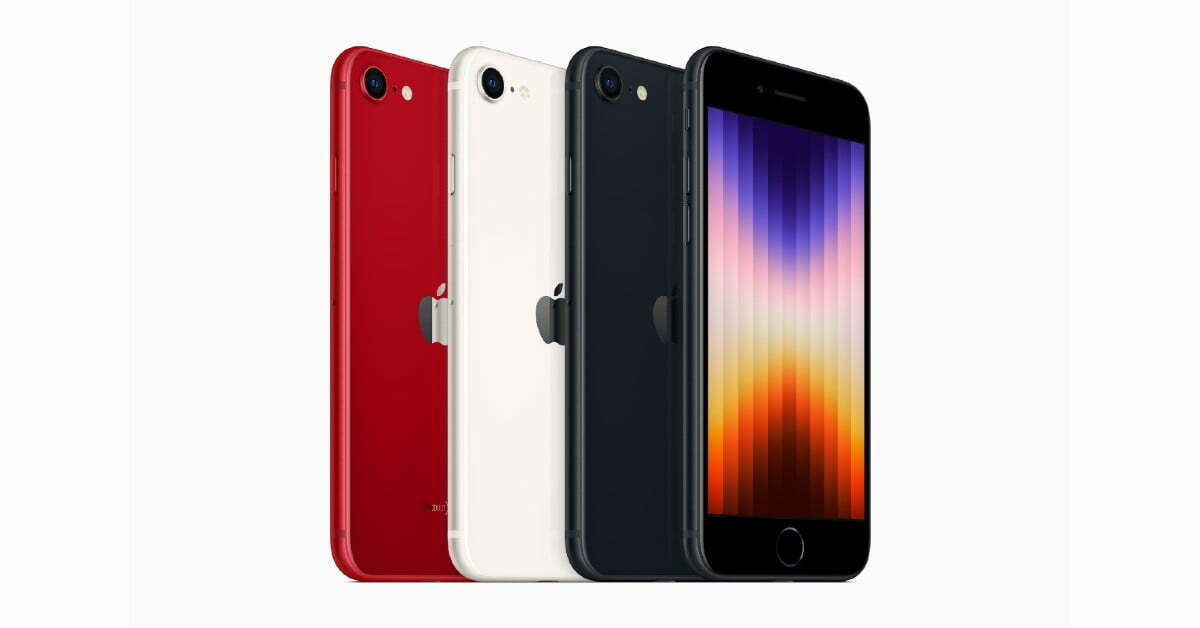| Image Credit: Apple
Apple iPhone SE 3 (2022) is the newest addition to the iPhone lineup in Europe. The new iPhone SE with an iPhone 8 era design but a modern A15 Bionic chip is being introduced as the most affordable iPhone in Apple’s iPhone lineup.
For years, Apple was being criticised for neglecting its consumers and increasing the price of iPhone models year-over-year. Apple launched the iPhone SE as an answer to this criticism and after not introducing an SE model last year, Apple is refreshing the iPhone SE with design from 2017 but some of the hardware elements first seen on the iPhone 13 series.
These are the women in science of the Amsterdam startup ecosystem.
Apple iPhone SE 3: Old design meets faster performance
The story of iPhone SE is not changing in a dramatic way this year. Apple is continuing with the design first seen on the iPhone 8 series in 2017. This means that the iPhone SE 3 has an aluminium unibody design with glass back. Apple, however, says that the glass back on the iPhone SE 3 is the toughest glass in a smartphone and is the same as the one seen on the iPhone 13 Pro and iPhone 13.
The new iPhone SE is also IP67 rated for water and dust resistance. At the front, it has a familiar looking Touch ID embedded with the home button for biometric authentication and securely approving payments. It still has the same 4.7-inch Retina HD display with a resolution of 1334 x 750 pixels and pixel density of 326 ppi.
The display supports true tone, P3 wide colour display, haptic touch and maximum brightness of 625 nits. The iPhone SE (3rd generation) is 7.3mm thick and weighs around 144 grams. “iPhone SE has been an incredibly popular choice with our existing users and for new iPhone customers, thanks to its iconic design, exceptional performance, and affordable price,” says Kaiann Drance, Apple’s vice president of Worldwide iPhone Product Marketing.
While the design remains the same, Apple is giving the SE much needed performance improvement. The iPhone SE 3 comes equipped with Apple’s powerful A15 Bionic chip, the same chip that powers iPhone 13 lineup. Apple claims A15 Bionic makes the new iPhone SE up to 1.8x faster than iPhone 8. The six core CPU also enables features like live text in the camera app and on-device dictation.
“This year we’ve built the most powerful and durable iPhone SE yet, with better battery life thanks to A15 Bionic, the same chip as our iPhone 13 lineup that also unlocks advanced camera features like Smart HDR 4, Photographic Styles, and Deep Fusion,” she adds.
The use of A15 Bionic also brings improvements to the camera experience. The iPhone SE 3 still uses a 12-megapixel rear camera with wide f/1.8 aperture and optical image stabilisation, but now supports Smart HDR 4, Photographic Styles, Deep Fusion, and Portrait mode. The Smart HDR 4 uses intelligent segmentation to apply different adjustments for colour, contrast, and noise to the subject versus the background.
The feature has helped the iPhone to properly expose faces in challenging lighting. Deep Fusion allows the iPhone to do pixel-by-pixel processing, optimising for texture, details, and noise in every part of an image. In a nutshell, the new iPhone SE 3 should be able to capture images with reduced noise, better white balance, and truer skin tone in different lighting conditions.
The iPhone SE 3 also supports 5G, bringing next generation mobile telephony with low latency, faster upload and download speeds, to Apple’s most affordable iPhone. It runs iOS 15 with SharePlay, FaceTime calls with spatial audio and will get iOS 15.4 update. With the iPhone SE 3, Apple is claiming battery life of up to 15 hours of video playback, which is two hours longer than its predecessor.
Apple iPhone SE 3: Price and pre-order date
Apple iPhone SE 3 is available in three different storage options: 64GB, 128GB, and 256GB. In the Netherlands, these models are priced at €529, €579, and €699, respectively. The iPhone SE 3 comes in midnight, starlight, and (PRODUCT) red colour and Apple is offering trade-in value between €80 and €645 on iPhone 8 or later models. The pre-order for the device starts on March 11 at 2 pm in the Netherlands.
Apple iPad Air 5 expands M1 across the lineup
While it was anticipated that the new iPhone SE will be the showstopper at Apple’s ‘Peek Performance’ event, it turned out Apple’s Silicon has even more cult status. Firstly, Apple decided to M1-fy its iPad lineup further by bringing the M1 chip to the iPad Air. Like the SE, the iPad Air retains the design and core hardware from its predecessor and adds performance gain to the mix.
The fifth generation iPad Air features a 10.9-inch Liquid Retina display with true tone that delivers a resolution of 2360 x 1640 pixels at 264 ppi. It is now powered by the M1 chip, which Apple claims results in 60 per cent faster performance and up to 2x faster graphics performance. This should make the iPad Air 5 a portable video editing machine and suited for augmented reality consumption on the go.
Apple is also bringing the 12MP ultra wide camera to the iPad Air 5 with support for centre stage. There is also another 12MP wide camera on the back that is capable of shooting 4K videos and tapping into the neural engine for accuracy. The iPad Air 5, of course, supports 5G and relies on USB Type-C port but lacks Thunderbolt support. It is compatible with Apple Pencil (2nd generation) and Magic Keyboard and Smart Keyboard Folio.
The iPad Air 5 is available in space grey, pink, purple, blue, and starlight colours. It is priced at €698.5 for the 64GB variant and €868.5 for the 256GB variant. In the Netherlands, the iPad Air 5 will be available for pre-order starting 2 pm on March 11 and will start shipping from March 18.
Apple Mac Studio and M1 Ultra are another peak in Apple Silicon transition
Apple also announced the M1 Ultra as the third expansion of the M1 Silicon range. With the M1 Ultra, Apple is connecting the die of two M1 Max chipsets to create a new system on a chip (SoC). The Cupertino, California-based company is calling this new packaging as UltraFusion and the SoC packs a total of 114 billion transistors.
In order to show the performance of the new M1 Ultra, Apple is introducing Mac Studio, a new Mac Mini style device optimised for the performance of M1 Max and M1 Ultra. Apple says the Mac Studio powered by M1 Ultra enables up to 3.8x faster CPU performance than the fastest 27-inch iMac with 10-core processor and up to 60 per cent faster CPU performance than the 28-core Mac Pro.
Apple is also promising big gains on the graphics front with claims of up to 4.5x faster graphics performance than the 27-inch iMac, and up to 80 per cent faster than the fastest Mac graphics card available right now. Mac Studio is a dream machine for all those video and content editors who wanted a powerful machine tuned to work with Apple’s suite of applications at their desk.
The Mac Studio also includes four Thunderbolt 4 ports, a 10Gb Ethernet port, two USB-A ports, an HDMI port, and a pro audio jack. Apple has been delivering on the wishes of consumers and to complement the Mac Studio, Apple is releasing a new Studio Display with 27-inch 5K Retina screen.
How partnering up with Salesforce helped him succeed!









![Read more about the article [Funding alert] NFTically raises seed round from Polygon Matic CEO and others](https://blog.digitalsevaa.com/wp-content/uploads/2021/07/85080f7239feebc4809b9e4a19856740eed3465e491dd8f6de1a57d885e6c67d-1625201880859-300x150.png)
